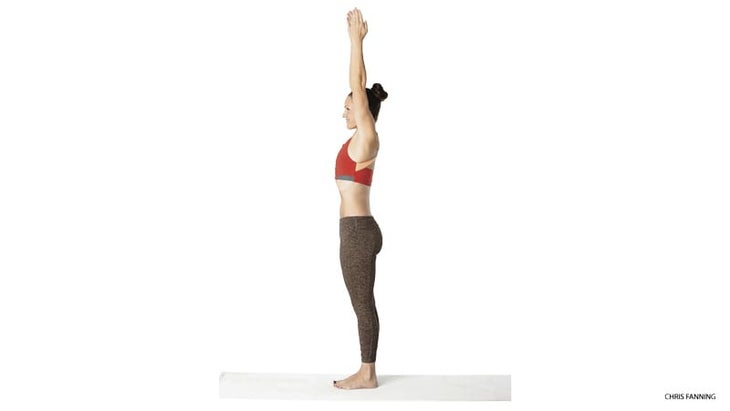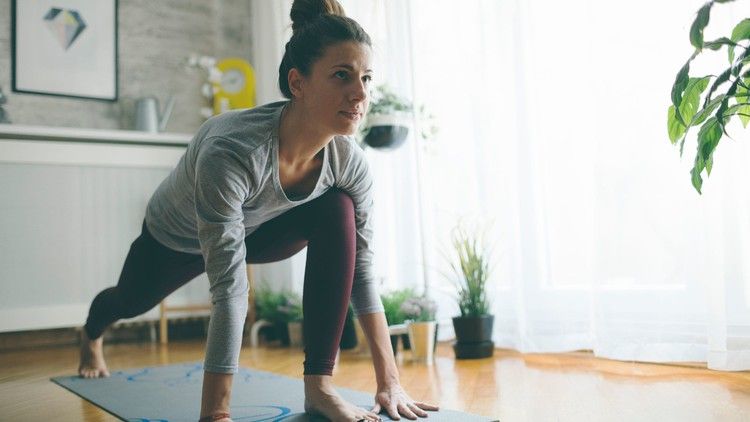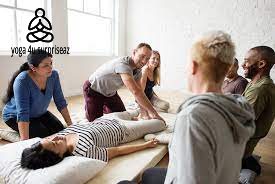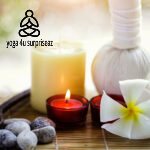How often do you practice yoga? If the answer is “not nearly enough,” then this blog post is for you! 22 Beginner Poses Every Yogi
Needs to Know will help you get started with a fun and challenging practice that can improve your health, relieve stress, and give you more energy.
We’ll take 22 of the most popular posts, one for each letter of the alphabet, so you can find what suits your needs best.
For those unfamiliar with the practice, getting into yoga for beginners can seem like a daunting task. To a newcomer, there appears to be so much to the culture and the world that it can feel like there’s no go-to place to start.
To an extent, there is some truth to this; the world of yoga and the benefits that one can gain from it is a very expansive field that has a long history.
However, this certainly does not mean that it is difficult to get involved with. There are plenty of ways to approach yoga for beginners that are intuitive and helpful in the long run.
Familiarising yourself with these top yoga poses for beginners before heading to your first class can help you build confidence.
That way, you’ll know what is expected in the class when you’re instructed to move into poses like the plank, triangle, or tree!
Many of these poses are used to help you shift from one part of your yoga session to the next, so you must know what they are.
You’ll be able to focus on your form and muscles instead of worrying about how to do it! Here are some of the best ten yoga poses for beginners that you need to know.
Chair Pose:
This powerful pose is said to strengthen the arm and leg muscles. Stand straight with your feet slightly apart; stretch your arms but don’t bend your elbow.
Bend your knee and keep coming down as you would while sitting on a chair, remain in that position, and keep breathing. Keep your arms parallel to the ground and keep your back straight.
Warrior Poses:
Warrior poses are incorporated into many yoga routines, making them a must-know when you first start. They help you build strength in your lower body and core, increasing your stamina.
They are also a lot of fun to do since you can feel the stretch in your hips, thighs, and arms as you do them!
Warrior 1 will help you stretch muscles in the front of your body while strengthening your upper body and areas like your legs, hips, and buttocks.
Warrior 2 is often used as a starting pose before moving into other poses that work on your sides. It helps open up your hips and inner thighs.
Tree Pose:
The tree pose is a great standing pose that helps you work on your balance. When you first start with yoga, you’ll turn to this pose to help you learn how to focus and concentrate on your body.
Although you’ll need to balance on one foot, it’s very easy to catch yourself if you feel unsteady by simply placing your other foot on the mat. This makes it perfect for beginners!
Downward Facing Dog Pose:
This could be the most well-known yoga pose! Chances are, you already know this one by name. But the downward-facing dog is a fantastic pose since it stretches and strengthens your entire body, from the tips of your fingers to your toes!
It can be challenging to get your balance right in this position when you first start. Draw your torso back towards your legs to shift your weight properly.
Seated Forward Bend:
The Seated Forward Bend is a pose that will undoubtedly make your body more flexible the more you do it. Your upper abdomen is in the same position as when you’re doing the Child’s pose, but this time, your legs are underneath you with your toes above your head.
It’s similar to sitting down and bringing your head down to your knees, letting the rest of your body follow suit.
Plank Pose:
This is another great pose to work on your balance. You’ll be supporting your body on your hands, so it also helps strengthen your arms and core muscles. It can be a bit of a challenge to hold, but you’ll be glad you learned it.
Start the pose from all fours. Grip your toes into your mat and lift your legs. Then, make your legs as straight as possible—imagine a line from your shoulders to the heels of your feet.
It will feel a lot like the up motion of a pushup. You’ll need to hold this position for several seconds to engage with your abdominal muscles for the full effect. Make sure that your shoulders are relaxed, keeping them down and away from your ears.

Bridge Pose:
This pose is similar to the plank because your body makes a similar shape, like a plank of wood. However, you’re facing upward with the bridge, with your head being at the lowest height.
So, you must prop your legs up and keep your arms underneath your back, extending your stomach outward to create the pose. Like with the plank, breathe deeply for 1 minute, release the pose, then do it again.
Boat Pose:
This is another effective pose that strengthens the abdominal muscles, shoulder, and back. Lay on the mat with your feet together, and your arms are resting by your side.
Please take a deep breath and, while exhaling, slowly lifts your chest and your feet and bring them closer in a straight line. Keep your arms stretched out and straight in the direction of your feet and remain in that position till you can feel your abdominal muscles work. As you exhale, come back to the ground and relax.
Triangle Pose:
This pose helps stretch the sides of your body, particularly around your waist. It also helps you open up your body to increase your flexibility and work on toning your legs. To move into the triangle pose:
- Stand with your feet about three feet apart.
- Raise your arms to shoulder height as you shift your right foot out to 90 degrees and your left foot in slightly.
- Tilt your upper body to the right as you place your right hand down on your ankle and lift your left arm upwards.
It can be done with modifications as you start. Try resting your hand on your shin instead or even on your thigh if you can’t reach your ankle. It’s most important to be comfortable as your practice yoga and not strain your body.
Corpse Pose:
This is an essential pose for all beginners: it will end each yoga session! Corpse pose helps you prepare to transition from the motion of your yoga class back into your regular day.
You’ll look forward to this pose as you have the opportunity to regroup by bringing your body and mind together in stillness. It can be not easy to let yourself be still, physically and mentally truly, but will get easier as you practice.
You take this pose by lying on your back on your yoga mat with your arms and legs stretched out. Keep your palms turned upwards and let your thoughts and worries drift away as you complete your yoga session.
Some tips for beginners
Understand Your Body’s Limits. Don’t try to hold yourself to impossible standards. Understand what you can or cannot do and try to listen to your body to see what it needs.
Find A Private Instructor, If Possible. Practicing alone is good, but it can be better to have an instructor guide you to ensure that you’re doing things correctly.
BREATHE! No matter how you do, make sure that you maintain steady, deep breaths! Once you connect with the flow of your breath, you will connect with the flow of your body and greatly increase your awareness and strength.

Conclusion:
This blog post will give 22 beginner yoga poses that every yogi needs to know. These 22 poses are designed for everyone, as they all help strengthen the abdominal muscles and aid in relaxation after a day of activity.
Remember to breathe deeply while practicing these moves and be kind to yourself if you can’t do them properly at first!



